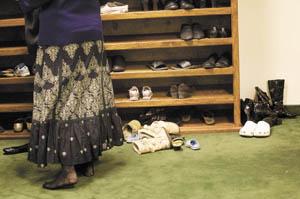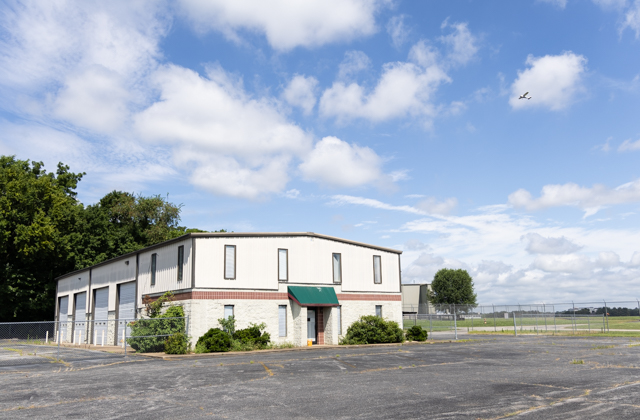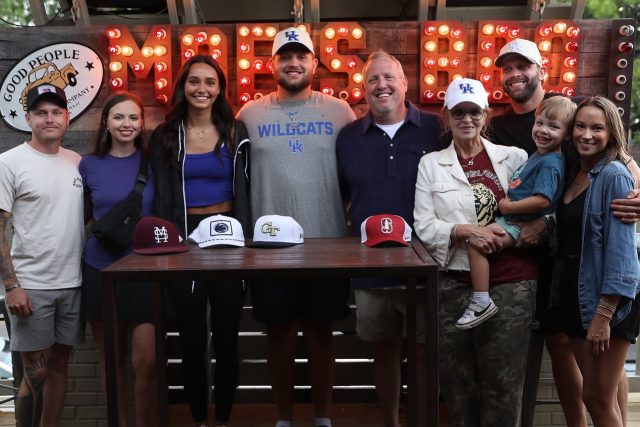Muslim faith grows in BG
Published 12:00 am Friday, December 31, 2010

- Alix Mattingly/Special to the Daily News Muslims are required to take off their shoes before entering into the main area of a Mosque, as to not dirty the floor where they pray. Here, women take their shoes off of shelves in the women's dressing room before they leave.
Stefanie Cruz is not a typical Islamic convert. She declared her faith in a YouTube video on Feb. 14.
After Cruz had befriended a few Muslims, her curiosity about Islam was awakened, she said. Her questions lingered in her thoughts for about 21/2 years and provoked her to do some research. Cruz still had questions and decided to go to one of Bowling Green’s three mosques, the Bowling Green Islamic Center.
Trending
“I didn’t go to the mosque to be converted,” Cruz said. “I needed to go to the mosque as a declaration to myself to see what it was really like.”
After her visit, Cruz came across a video on YouTube that talked about Shahadah, the Muslim declaration of faith.
Cruz said she then e-mailed the creator of the video, asking him questions about the emotion she felt from watching the video. The man replied that she should not think badly of her tears because they were an expression of emotion caused by God.
Cruz later made her Shahadah in a video response to the man’s video.
“And now I have the greatest level of peace I’ve ever had in my life,” she said.
Cruz is one of 5,000 to 6,000 followers of Islam who live in the Bowling Green area, said Imam Sedin Agic of the Bowling Green Islamic Center.
Trending
The number of Muslims has grown in Bowling Green over the past decade after many Bosnian followers of Islam came to the area seeking refuge during and after the Bosnian War that ended in November 1995, said Ahmed Emam, a Muslim and a computer science professor at Western Kentucky University.
“Seven thousand refugees came from old Yugoslavia,” he said.
Of the 7,000 refugees who considered themselves Muslim, about 500 were practicing their faith, Emam said.
This influx of Islam followers to the area helped unite the Muslim community, Emam said.
After worshipping at different locations, the community began building the city’s first mosque, the Islamic Center of Bowling Green.
The Islamic Center, 2140 Morgantown Road, has a mix of Islamic and Moorish architecture and was built in 2005. The Muslim community in Bowling Green built the mosque eight years after it began to unite, Agic said.
According to an information packet from the center, Islam is the peace a person receives when he or she submits to the will of God.
According to the packet, “A true Muslim is one who has disciplined his life in accordance with the instructions conveyed by God through His messenger.”
Meliha Hrustanovic is a Bosnian refugee who worships at one of the city’s other mosques, the Bowling Green Islamic Society at 802 Lain Ave.
She said she left Bosnia in 1995 and fled to Germany until 1999, when the United States accepted her family’s immigration application.
Hrustanovic was 8 years old when her family came to the U.S. She said she remembers feeling like an outsider when she arrived.
“It was harder, kind of, to be yourself,” she said.
As the Islamic community has grown in Bowling Green, Hrustanovic has learned to appreciate those who are openly Muslim.
“As I’ve gotten older I realize it’s just my religion, so their opinions really don’t affect me,” she said about people who make her feel different for being Muslim.
The Bosnian Muslim community is still expanding. The Bosnian Islamic Center of Bowling Green at 115 Dishman Lane will be moving to a new building on Blue Level Road.
While the Muslim population here is mostly Bosnian, the congregation at the Bowling Green Islamic Center is diverse, said Mustafa Atici, a Muslim computer science professor at WKU.
“One time I remember counting 15 different nationalities,” Atici said.
Emam said that Muslims from Pakistan, India, Egypt, Myanmar, Somalia, Nigeria, Afghanistan, Morocco, Iraq and other places all worship at the Bowling Green Islamic Center.
After coming to Bowling Green from Morocco and then leaving to find a job, Nebil Loutfi came back for the Islamic community in Bowling Green.
“I decided to come back because the community here is great,” he said.
The allure of the strong Muslim community has helped to bring assets to Bowling Green, such as doctors and small-business owners, Loutfi said.
One of those doctors is Nagy Morsi, a gastroenterologist who helped to get the Bowling Green Islamic Center built.
He said he moved to Bowling Green 15 years ago and has been working to establish an interfaith dialogue and change how Islam is perceived in the media. Imam Agic said true Islam is not the same as the one he sees portrayed on the news.
“We are a very peaceful people, so this is the true religion,” Agic said.
Part of changing that image comes with educating the youth in the community. The Bowling Green Islamic Center offers classes every Saturday and Sunday to children who attend the mosque.
While Muslim children are not required to attend, most do. The classes come in three levels. First is Sufara, where children learn Arabic letters. In the second class they learn the Quran and other holy books. The last is Ilmihah, which teaches a small history of Islam.
The Muslim community has grown to make up 10 percent of Bowling Green’s population as of 2006, Morsi said. The community is still growing, with people moving to the area and immigrants seeking refuge in Bowling Green. Converts add to this number as well.
Among the converts are Traci and Tommy Webb. They first visited the mosque as part of a world religions class that Traci was teaching at the Unitarian Universalist Church of Bowling Green.
When none of her students showed up for the visit, the Webbs spent two hours speaking with the imam and his wife.
After the conversation, the couple ate lunch and Traci Webb said she felt a change in herself and saw the same change in her husband.
“I could see in him a peace that I had never seen before, and I knew this was the religion for us,” she said.






